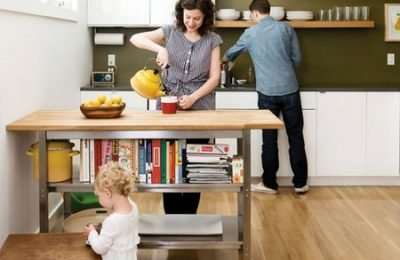Use Of Space In A Small Dining Room – The following ideas for a small dining room are probably the most useful to most people. If you have a small dining room, your furniture should be chosen accordingly. By choosing a round dining table there will appear to be more space around the room’s perimeter. You can also seat more people at a round table for the available space, and if it has a pedestal base then you have no worries about table legs getting in the way of guests’ legs!
Your dining chairs should be armless and slender rather than chunky – they might take up the same overall space, but slender chairs give the impression of space between diners. Some dining room furniture lines offer double chairs – just like dining loveseats! These are great if you want to make the best of the space round a rectangular table.

There are many more small dining room tips to offer, such as using extendable/folding tables and the correct selection of cabinets or buffets, but the above should help you to make best use of your small dining room – or even your large dining room, because size is relative.
Light colors tend to open out a room while dark shades tend to make it look smaller. However, light need not mean drab, and whites and pastels can be accented with a bright contrasting color. This is particularly effective when color is use to draw attention to specific decorative elements.
Don’t overuse color, though. You can have one colorful wall with others in white or a neutral shade, or use brightly-colored dining chairs with light wall-coverings or even white painted walls. Use whatever works for you, although white and pale pastel shades with sparing use of bright colors is very popular.

Use lighting to maximum effect. The more natural light the better, so keep your windows as large as possible. A single large pane of glass looks more spacious than multiple smaller panes. Minimize window furnishings such as curtains and avoid dark curtains. Bright colors can accentuate the light coming through a window, and many choose bright yellow or red curtains to contrast with white wooden or vinyl frames.
Artificial light should be sparkling but not too bright, and the ideal type of overhead lighting for a small dining room is a small chandelier – this will make a small table appear larger. If you have a dimmer switch, overhead spotlights or ceiling space lighting would also be suitable. The lighting in any size of dining room should be subtle but sufficient.

A low ceiling should not be accentuated, but at least partially obscured by a low level of upward lighting – the ceiling should be ‘up there somewhere’ without guests feeling they can reach up and touch it! Open up the ceiling if has been artificially lowered – a design feature of the 60s to 90s, but one that makes rooms look smaller.
Mirrors not only make good use of light, but also make a room appear larger, particularly if they reflect each other. Two or three slightly angled mirrors reflecting a single light source can make a small chandelier, or even spotlights, go much further. Arranging mirrors to reflect sparkling glassware or silver will also increase the apparent size of a room.

Tableware – this term refers to centerpieces, flower vases, bowls and even stemware. Your table should be designed to promote conversation, and there are three aspects to that, namely:
a) Guests’ views should not be obstructed by your tableware and accessories, and any flowers should be displayed in low-level vases or bowls;
b) Your stemware should be crystal, even if lead crystal, because sparkling glasses always look good at a dinner table, and their reflections in a mirror can open a small dining room right up and,
c) You should include some fabrics in your décor to absorb sound waves.

Small dining room acoustics. One of the more useful small dining room tips that you do not often find is to deaden the acoustics in the room. A small room with plain walls and woodblock flooring will reflect sound waves, so that conversation will appear to boom and reverberate, particularly as the evening goes on and the wine starts to take effect!
While a highly polished or even rustic wood table looks nice, it is more practical to use a tablecloth. This not only protects the table from scratches and dropped food, but also absorbs sound waves. Fabric wall-coverings also look good while wallpaper is better that paint or paneling.













